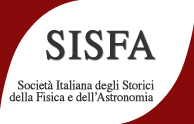Speaker
Description
The Torlonia telescope has recently been the subject of studies that have highlighted its value for the development of science in the Papal States, in 19th century. This renewed interest was made possible through a process of restoration and valorization.
Rome had a long tradition of astronomical studies and the telescope became a symbol of a period when scientific thought was promoted both by Papal States and by roman patrons.
In 1814, Pio VII established a chair of Sacred Physics and Astronomy at Sapienza University, assigning it to Feliciano Scarpellini who reconstituted the Accademia dei Lincei.
In 1824, with the bull of Pope Leone XII Quod divina Sapientia, universities were once again placed under papal authority and two years later, the Pope decided to equip La Sapienza with the observatory on the Campidoglio and Scarpellini was appointed director.
In that context, in 1835 the telescope was designed as a demonstration of how experimental and innovative science was managed in Rome.
Alberto Gatti, an engineer that focused his research on crafting a primary mirror from polished hard stone, submitted a memorandum of his idea to the Papal Secretariat. Scarpellini considered it innovative and he presented it to Prince Alessandro Torlonia, who commissioned to Angelo Luswergh the construction of the telescope.
It was installed on the Campidoglio, where it was tested through terrestrial observations and it remained an experimental device and a tool for popularizing astronomy rather than a fully functional observational instrument, as evidenced by Ignazio Calandrelli.

